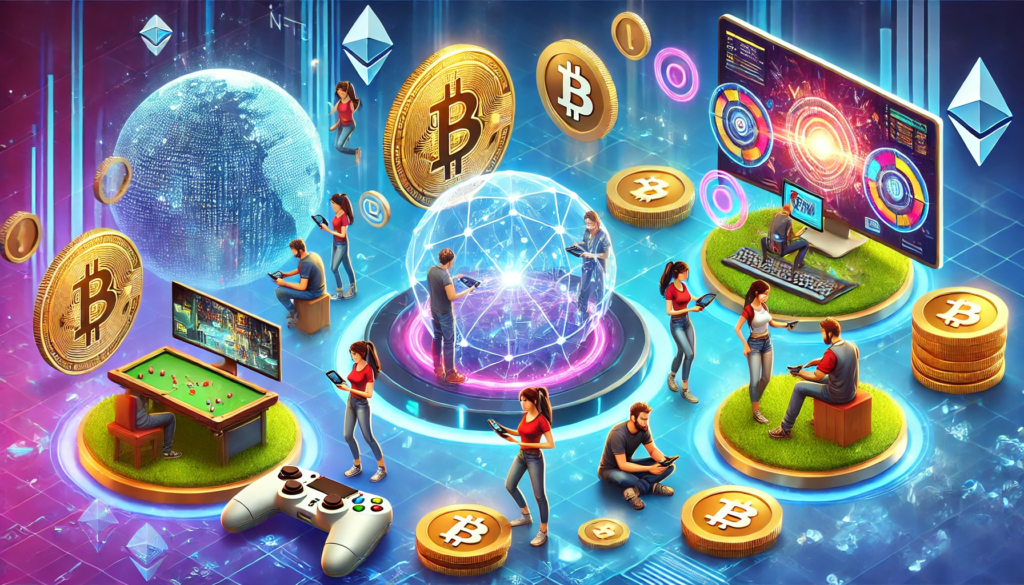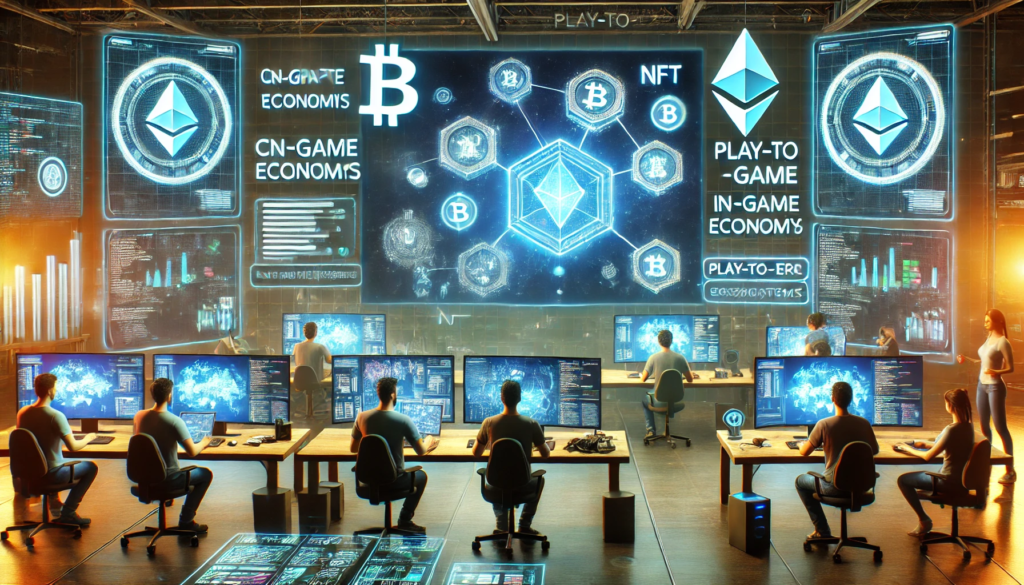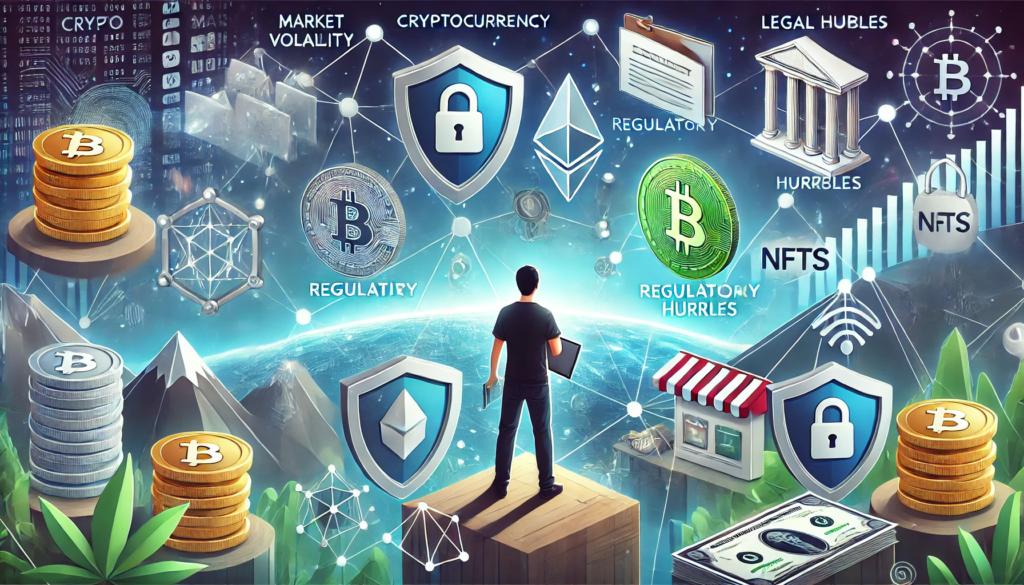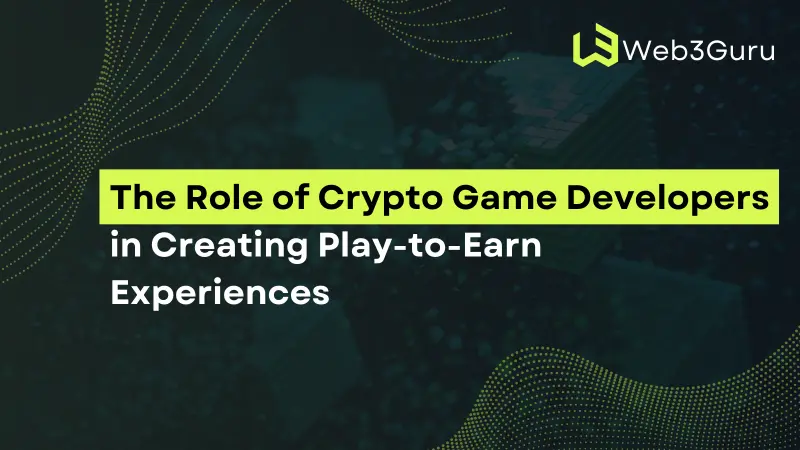Contents
Introduction
Play-to-Earn (P2E) gaming has transformed the gaming world, allowing players to earn real-world value through their in-game activities. No longer just for entertainment, P2E games have become a gateway to financial opportunities, merging fun with profit in a way that has captivated millions globally. This shift has not only redefined gaming but also created new avenues for economic participation, largely driven by the role of crypto game developers.
Crypto game developers are at the core of this transformation, playing a crucial role in designing and building immersive P2E experiences. Their expertise and creativity drive the innovation behind these ecosystems, ensuring they are engaging, sustainable, and rewarding for players. The role of crypto game developers goes beyond just creating games—they are shaping the future of digital economies within these games.
By leveraging technologies like blockchain and cryptocurrency, crypto game developers are paving the way for a new era in digital gaming. Player ownership and monetization have become key components, thanks to their pivotal role in developing these ecosystems.
The Basics of Play-to-Earn Models

Play-to-Earn (P2E) models have reshaped the landscape of gaming, turning it into an economy where players can earn tangible rewards for their efforts. Unlike traditional gaming, where players spend money to access content, P2E empowers users to earn through gameplay, creating a symbiotic relationship between the game and its community.
Central to this system is blockchain technology, which facilitates the ownership and transfer of in-game assets, often represented by non-fungible tokens (NFTs), and cryptocurrencies. These elements allow players to truly own their in-game items, trade them, or convert them into real-world value.
Definition of Play-to-Earn
P2E gaming refers to a model where players earn rewards of actual value through their participation. These rewards often come in the form of cryptocurrencies or NFTs, which players can trade or sell in various marketplaces. This model is powered by blockchain technology, ensuring transparency and security in transactions.
Players may earn by completing tasks, leveling up, or even by simply owning valuable in-game assets that appreciate over time. For instance, games like Axie Infinity have demonstrated how this model works by allowing players to breed and battle creatures (Axies), earning tokens that can be traded for real currency.
Evolution of P2E
The transition from traditional gaming models to P2E represents a significant milestone in the gaming industry. Traditional games required players to make in-game purchases with no possibility of financial return. However, the introduction of blockchain in gaming has changed this dynamic.
Early pioneers like Axie Infinity and Decentraland set the stage for the evolution of P2E by allowing users to earn, trade, and sell in-game assets for real-world value. These games attracted significant attention due to their innovative use of blockchain technology and have inspired a new generation of crypto games that continue to evolve and expand.
The Role of Crypto Game Developers

Crypto game developers are at the heart of the Play-to-Earn (P2E) ecosystem. Their role goes beyond just creating entertaining games; they are responsible for building entire economies within these games, integrating blockchain technology, and ensuring an engaging user experience.
The success of P2E games depends largely on how well developers can balance the financial aspects with the entertainment value, ensuring both sustainability and player enjoyment.
Designing Game Economies
A critical responsibility for crypto game developers is designing in-game economies that foster both player engagement and long-term growth. This involves creating a system where player rewards are meaningful, yet the game’s economy remains balanced and sustainable.
Tokenomics plays a crucial role here, as developers must carefully manage the supply and demand of in-game tokens and assets to maintain scarcity, which drives value. By incorporating mechanisms that control inflation and ensure the longevity of the in-game economy, developers can create a thriving P2E environment that keeps players invested in both the game and its ecosystem.
Integration of Blockchain and NFTs
Another fundamental aspect of P2E gaming is the integration of blockchain and NFTs. Developers are tasked with embedding blockchain technology into their games to provide transparency and decentralization. Through blockchain, players can truly own their in-game assets, which are often represented by NFTs.
These NFTs can be traded, sold, or used in other games, giving players more control over their digital possessions. This integration ensures that the value players earn in the game can extend beyond the game itself, creating new opportunities for financial gain and interaction with the wider digital economy.
Creating Engaging Gameplay
While designing economic models and integrating blockchain technology is essential, developers must also focus on keeping the gameplay itself engaging. One of the biggest challenges in P2E gaming is balancing the financial incentives with a fun and immersive experience.
Developers need to ensure that players remain entertained, rather than turning the game into a pure financial activity. This requires careful attention to game mechanics, storytelling, and user experience, ensuring that the game offers more than just monetary rewards but also delivers on its core promise of entertainment.
Challenges Faced by Developers

While crypto game developers are driving innovation in the Play-to-Earn (P2E) space, they face several significant challenges. From dealing with market fluctuations to ensuring compliance with complex regulations, developers must navigate a constantly shifting landscape.
Additionally, the responsibility of safeguarding players’ digital assets adds another layer of complexity. These challenges require developers to be not only creative but also strategic and proactive in managing potential risks.
Market Volatility
One of the biggest hurdles for crypto game developers is the volatility of cryptocurrencies. The value of tokens earned by players can fluctuate wildly, making it difficult to maintain a stable in-game economy. When the market is unstable, players’ earnings may decrease in value, leading to potential dissatisfaction and a drop in player engagement.
Developers must carefully design economic models that can withstand these market shifts, ensuring that the game remains viable and that players continue to see value in their participation, regardless of short-term market conditions.
Regulatory Uncertainty
Navigating the legal landscape is another challenge developers face. P2E games operate in a relatively new and evolving space, where regulations are often unclear or subject to change. Developers must stay informed about local and global regulations regarding cryptocurrencies, NFTs, and digital assets.
Failure to comply with these laws could lead to penalties, or even shutdowns, which could impact the game’s longevity and player trust. Ensuring compliance while keeping the game accessible and rewarding for players requires constant vigilance and legal expertise.
Security Concerns
Security is paramount in the P2E space, as players are often investing both time and money into these games. Protecting digital assets, including in-game tokens and NFTs, is critical to maintaining player trust.
Developers must implement strong security protocols to prevent hacks, fraud, and other malicious activities that could compromise player accounts or the in-game economy. By ensuring the safety of player assets, developers can foster a more secure and trustworthy environment, which is essential for the continued growth and success of P2E games.
Opportunities for Innovation
As the Play-to-Earn (P2E) gaming space continues to grow, there are numerous opportunities for developers to innovate and push the boundaries of what these ecosystems can offer. From integrating decentralized finance (DeFi) elements to collaborating with traditional gaming companies, the future of P2E holds immense potential for creativity and expansion. Developers who can capitalize on these opportunities will be at the forefront of the next wave of gaming evolution.
Expanding the P2E Ecosystem
One of the most promising areas for innovation lies in expanding the P2E ecosystem itself. Developers have the opportunity to explore new ways to engage players by integrating decentralized finance (DeFi) elements, allowing players to participate in yield farming or staking while they game.
Additionally, by enhancing decentralized autonomous organization (DAO) governance within games, developers can give players a direct voice in decision-making processes, fostering a sense of ownership and community.
Another exciting prospect is interoperability across different P2E games, where players can transfer assets, tokens, or even characters between games, creating a more seamless and expansive gaming experience.
Collaborations with Traditional Gaming
Another key area of opportunity for crypto game developers is collaborating with traditional gaming companies. By joining forces, these developers can bridge the gap between Web2 and Web3 gaming, introducing blockchain-based elements to a larger, more mainstream audience.
Traditional gaming companies bring decades of experience in creating engaging gameplay, while crypto developers can introduce the innovative elements of P2E, such as digital ownership and token-based rewards. These collaborations could lead to a new generation of hybrid games that combine the best of both worlds.
Future Trends
Looking ahead, several trends are likely to shape the future of P2E gaming. One major trend is the integration of the metaverse, where players can engage in a fully immersive, interconnected virtual world that blends gaming, social interaction, and economic opportunities.
Social gaming experiences are also expected to rise, with players forming communities and working together to achieve common goals, all while earning rewards. Additionally, new revenue models may emerge, offering developers and players alike more ways to monetize their participation, such as subscription-based P2E games or games with in-game economies that mirror real-world markets.
These opportunities for innovation offer exciting possibilities for both developers and players, as the P2E space continues to evolve and redefine the future of gaming.
Conclusion
Crypto game developers are the driving force behind the rise of Play-to-Earn (P2E) gaming, playing a pivotal role in shaping this new frontier. The role of crypto game developers involves balancing innovation, creating sustainable in-game economies, integrating blockchain technology, and ensuring that gameplay remains engaging and rewarding for players.
At the same time, crypto game developers face challenges such as market volatility, regulatory uncertainty, and security concerns. Despite these hurdles, the role of crypto game developers offers vast opportunities for growth and innovation in P2E, from expanding the ecosystem to collaborating with traditional gaming companies.
For both crypto game developers and players, staying informed and engaged with the latest advancements in P2E gaming is crucial. The future of gaming is being built today, and those who understand the role of crypto game developers will be at the forefront of shaping its direction for years to come.
